Museum exhibits strive to connect each visitor to human rights. The Museum’s 10 core galleries contain diverse stories, from Canada and around the world, relayed through interactive presentation, multimedia technology and world‐class design. An amazing encounter with human rights awaits!
Galleries
Permanent
Tags:

Photo: CMHR, Aaron Cohen
Exhibition details
What Are Human Rights?
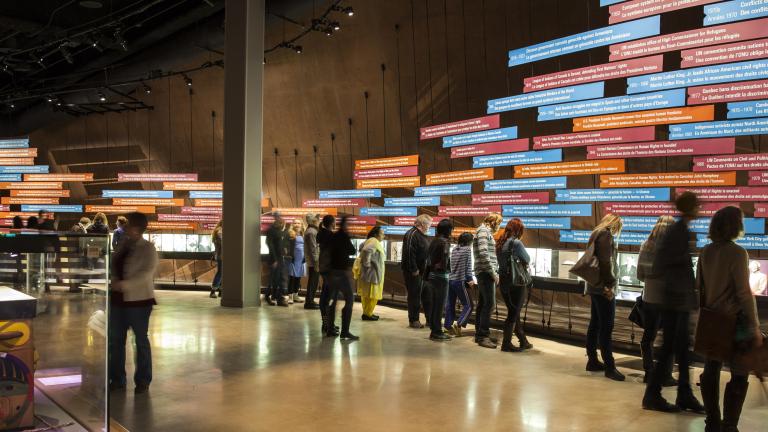
An introduction to human rights
Throughout history, people have grappled with ideas about human dignity, respect and responsibility. Today the term “human rights” generally refers to the rights and freedoms we have simply because we are human. It’s an idea thousands of years in the making.
In this gallery, we are immersed in a multimedia show featuring people speaking about their own perspectives on human rights. A timeline presents 100 selected moments in human rights history throughout the ages and around the world.
Indigenous Perspectives
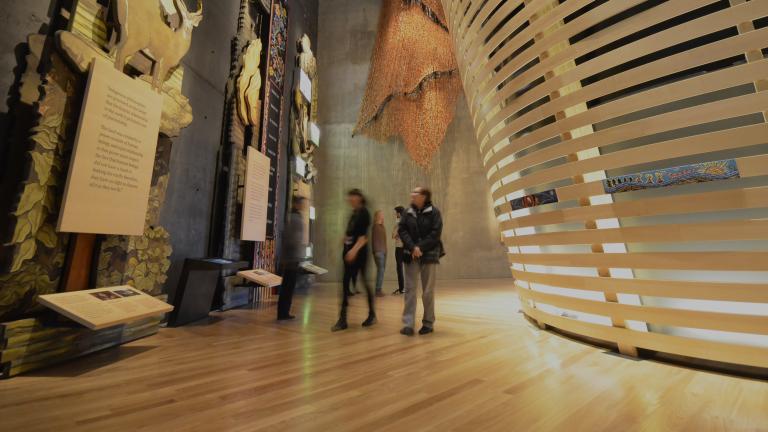
Expressing rights and responsibilities
First Nations, Métis and Inuit peoples have concepts of rights and responsibilities based on worldviews in which everyone and everything is interrelated.
In one of the most dramatic spaces of the Museum, the focus is a circular theatre of curved wooden slats, some of which include original works of art. The theatre will play a 360‐degree film that shares stories of Indigenous rights and responsibilities, as told through four different generations.
Canadian Journeys
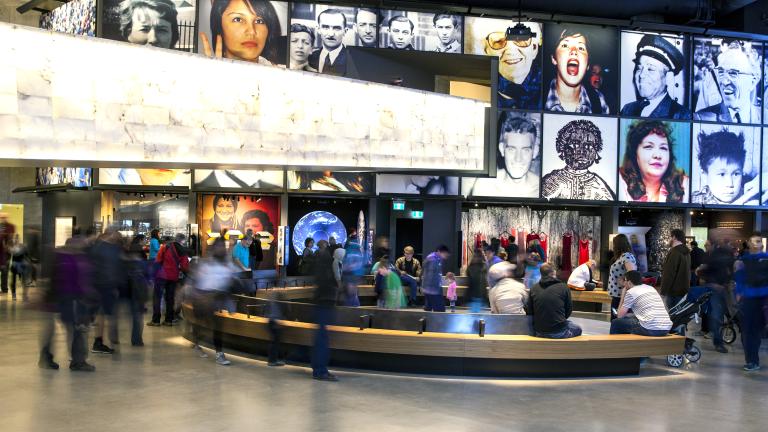
Countless stories, countless journeys
There have been steps and missteps on the road to greater rights for everyone in Canada. This panorama of experience reflects continuing efforts to achieve human rights for all.
This gallery, the largest of the Museum, explores dozens of Canadian stories, from democratic rights to language rights, from freedom of conscience to freedom from discrimination. A digital canvas relays stories across a 29‐metre screen, while others are told in floor stations and story niches.
Protecting Rights in Canada

Canada’s evolving legal framework
Canada’s unique legal system has evolved to protect human rights. It has been likened to a living tree for its ability to grow and adapt to new realities. Important original documents are displayed in this gallery, including the Proclamation of the Constitution Act, 1982.
A digital “living tree” projection evokes the constant evolution of laws. Around a circular table, we explore pivotal court cases from different perspectives.
Examining the Holocaust
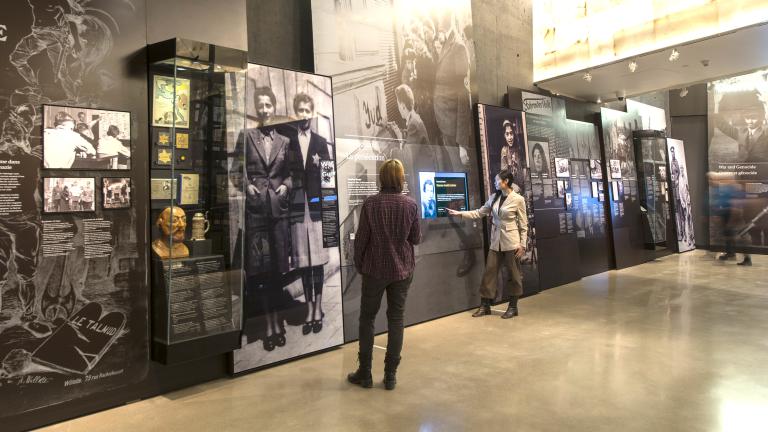
The fragility of human rights
When the Nazi government used laws and violence to deprive people of their rights as citizens and humans, and the majority went along, genocide was the horrific result. We examine the Holocaust to learn to recognize genocide and try to prevent it.
The “broken‐glass” theatre examines Canada’s own experiences with anti‐Semitism.
Turning Points for Humanity
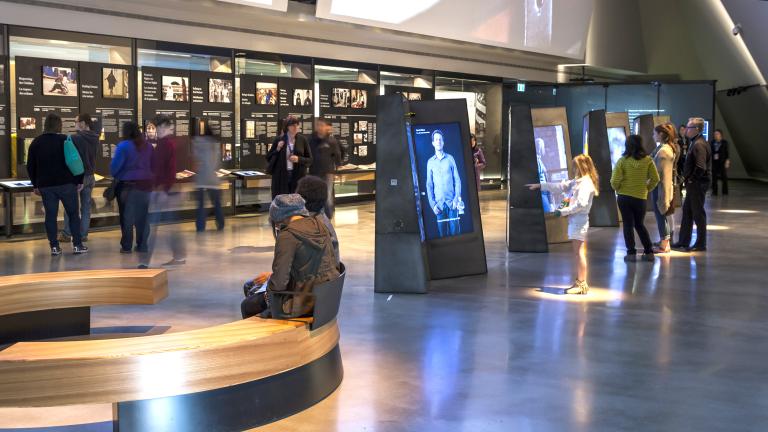
Collective action and the Universal Declaration of Human Rights
The idea that rights belong to us just because we are human—no matter who we are or where we live—was adopted in 1948 in the Universal Declaration of Human Rights. People continue to work tirelessly to make this great hope a reality.
Large digital monitors, in the shape of open books, explore how people working together have gained new protections for human rights.
Breaking the Silence
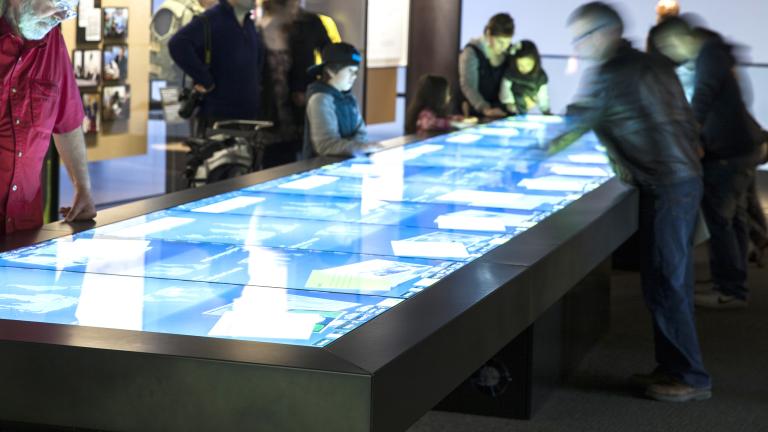
Speaking out on human rights violations
Words are powerful. When people dare to break the silence about mass atrocities, they promote the human rights of everyone.
This gallery explores the role of secrecy and denial in many atrocities around the world. It includes a focused examination of the Ukrainian Holodomor, the Armenian Genocide, the Holocaust, the Rwandan Genocide and the Srebrenica Genocide in Bosnia. The centrepiece is a digital study table that presents images and documents related to mass human rights violations.
Actions Count
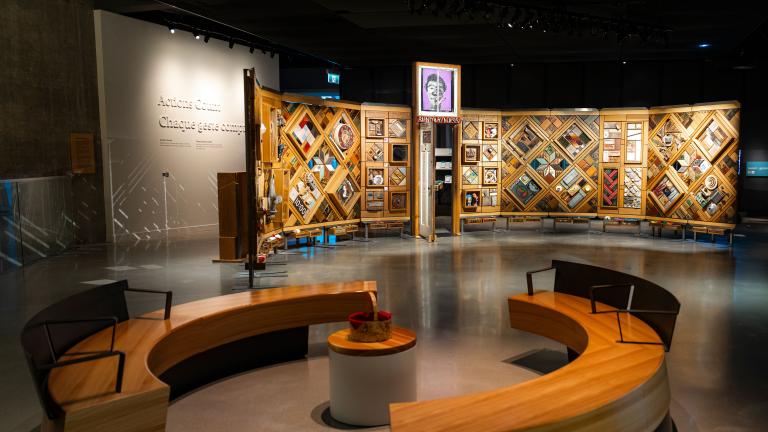
Taking action for human rights makes a difference.
Art can speak volumes when words are not enough.
This gallery features the Witness Blanket, a large‐scale art installation that honours the children who were forced into the Indian residential school system in Canada. It is made up of over 800 items that were donated or reclaimed from former residential school sites, government buildings, churches and cultural structures.
Rights Today
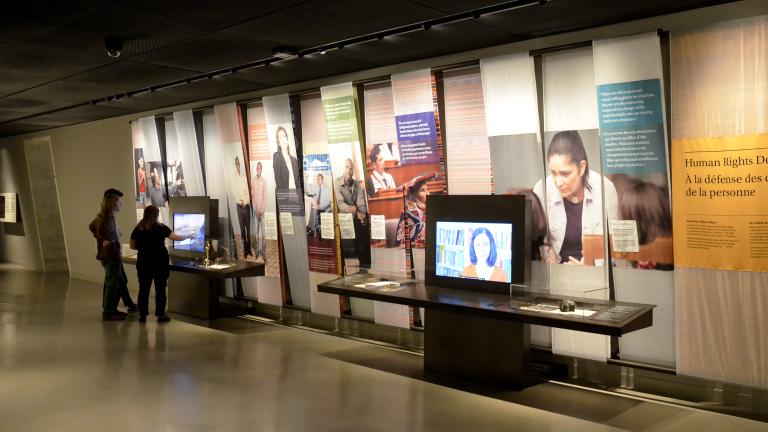
Human rights in the contemporary world
Human rights are ever‐changing in our interconnected world. How should we respond? Awareness, critical thinking and deep understanding help us determine effective action.
Bringing us face‐to‐face with contemporary human rights struggles and action, this gallery features an interactive wall map, a tapestry of human rights defenders and a small theatre to make us think critically about what we watch and read.
Inspiring Change
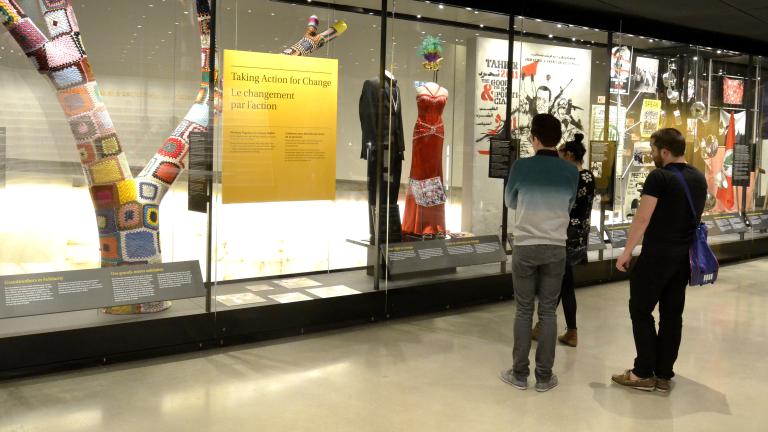
Promoting dialogue and participation
What do human rights mean to you? Respect for others? Dignity for all? Equality and freedom? Ideals become real through action, imagination and commitment.
Intended to spark personal reflection on how each of us may contribute to positive social change, this gallery incorporates objects and images from events that have promoted human rights, and asks us to contemplate our own role in building a better world for all people.